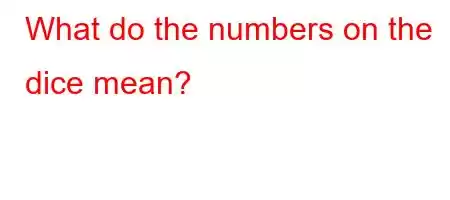What do the numbers on the trending dice mean? by Admin May 6, 2020
Contents
What do the numbers on the dice mean?On a standard dice, the sum of the numbers on two opposite faces always equals 7. For example; The opposite side of the dice corresponding to 1 is 6, and the opposite side of the dice corresponding to 2 is 5.
What is the name of the pencü dice?Today, the tradition of backgammon continues in Turks. In backgammon, which is a very common game in Turkey, skillful players use the names of dice combinations that have passed from Persian to Turkish as a tradition. Yek (1), Du (2), Se (3), Cehar (4), Penç (5), Shesh (6).
What is it called when the dice roll 6 6?
In backgammon, although the numbers up to 6 have Persian equivalents, they are defined as complementing in double dice rolled. Just as the Duchess, one of the most popular dice, describes the 6-6 dice, all double dice have this definition.
Which country does backgammon belong to?As far as is known, it was developed by Büzur Mehir, the chief vizier of the Iranian Shah (Persian Emperor) Nevşiyan 1400 years ago. It is extremely impressive that the game, which was designed with inspiration from the concept of time, is among the most played games of all time.
What happens if 6-6 in backgammon?If the dice roll is 1-1, 2-2, 3-3, 4-4, 5-5 or 6-6, the person plays that game 4 times. So for example, if 6-6 is rolled, 6 is played 4 times. In double rolls, the superiority can pass to the person who rolls that dice. For this reason, it is important to throw a double.
What does Four Cihar mean?
Four is the four we know, so what is cihar, which is actually four we know, the Persian one of four is more correctly pronounced "chehar". It is also pronounced like four caar. A dice with zero charisma in my eyes, even if it's one of the ideal dice for escaping at the end of the game, even if nice doors are knocked down at the beginning of the game.
What is the event output?TERMS RELATED TO PROBABILITY EXPERIMENT: The process of seeing what the outcome of an event will be is called an experiment. In this example, throwing the dice is an experiment. OUTPUT: Each of the results that can be obtained in an experiment is called the output. In this example, the outputs are 1,2,3,4,5, and 6.
How many different cases are there when 5 coins are flipped, and 3 of them land two heads?So, there are 4 possibilities.
Read: 193


